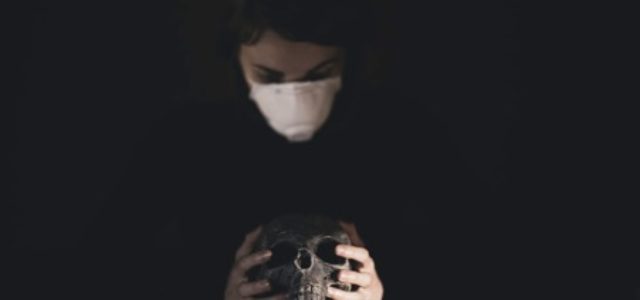Erica Borgstrom
The news of deaths related to Covid-19 both in the UK and globally is our current daily reality. You may even be reading them with your morning coffee and afternoon tea. This article is one of them. The current Covid-19 pandemic has brought death to the forefront, challenging societal ideas of what a good death is and the funerary norms we expect after someone has died.
Some say that death is a taboo in the UK, but along with many other academics, I’d argue that this is not the case. Indeed, these daily – sometimes hourly updated – headlines indicate that we are all engrossed in knowing more about death and that talking, or at least reading, about it won’t cause death per se. Instead, I’d argue that many are concerned about what dying is like and are apprehensive to discuss their fears about when and how it may finally happen to us or those we care about and what kind of legacy one leaves behind. So culturally and socially, to help us make sense of those concerns, we invest in ideals around how death and dying should be– a so-called good death.
I’m not suggesting that there is one archetypical good death that we all strive to have. My own research about end-of-life care in England over the last 10 years has indicated that this is both impossible and also undesirable, especially if people think their deaths should reflect a notion of their individuality. But there are certain cultural scripts for how we societally evaluate some deaths as being relatively good, and these can vary between cultures. And COVID-19 is challenging a lot of those scripts, especially in countries like the UK and the USA.
Firstly, a timely death is often part of what people think of when they envision a good death. It is neither ‘before one’s time’ or after prolonged dying. Shortly after the first confirmed deaths in the UK from COVID-19 came an article naming the deceased, announcing how their lives were cut short, which continues to be updated. Even the Prime Minster suggested that many people would ‘lose loved ones before their time’; as a social scientist, I think we should be critical of a government that is willing to accept the presumption that some groups of people will – and can – die before their time.
To counter the narrative that it only older people dying, articles highlighting how young some of the deceased have been, serve not only to highlight how COVID-19 can affect people of any age, but also how untimely the deaths may be. As a society, such articles invite us to grieve these deaths of adolescents or of parents with young children, for example, as a way of reminding us how this pandemic is causing tragic deaths rather than so-called good ones.
Another common feature of the good death trope is that the dying person is in familiar surroundings. This is often read to mean their own home, and has been a key policy driver in end-of-life care to increase the amount of people dying at home (rather than hospital) for the past 10 years. It’s reverse – dying in an unfamiliar place, like a hospital – can be deemed undesirable, even if hospital care is needed. With COVID-19, it currently appears as if most of the reported deaths are occurring in hospital. Deaths in ICU are culturally considered to be particularly tragic as it is the site imbued with hope and last attempts to fight off death. If ICU deaths were troublesome deaths before COVID-19, it will be even harder to reconcile them with the concept of a good death now.
Because the coronavirus is an infections disease, the dying person and their dead body are being treated like a site of contagion. This means that those dying from COVID-19 may be doing so alone. Typically, people are judgemental or upset upon hearing if someone has died alone (although some people may prefer this). With restrictions on who can visit in hospital, our response to COVID-19 means that more people are likely to die alone – either from the disease or even from other causes. There are even reports of people dying alone at home, prompting some on social media to encourage others to check on all their friends and neighbours who are self-isolating, not just to provide support but to ensure their dead body is found in a timely manner.
Being a contagion also means that how the body is treated after death has changed. In some places, this means direct cremations has been recommended to minimise the risk of the disease spreading. Rather than a large funeral marking a great life – and good death – memorial gatherings are having to be limited with enforced social distancing, and family and friends live streaming the service. There may also be no family at a service if they themselves are ill. Although we often think of a good death in terms of how a person dies, culturally how the death is marked is another way of determining the value of a person’s death.
We are still in challenging and changing times. We don’t know for sure the long-term impacts dying in the time of Covid-19 will have on the bereaved, our healthcare and death work systems. One thing that is certain is that the current situation is not one many people would have expected for their own death or that of someone they care about.
Erica Borgstrom is a medical anthropologist and lecturer at the Open University.
Image Credit: Engin Akyurton Unsplash
